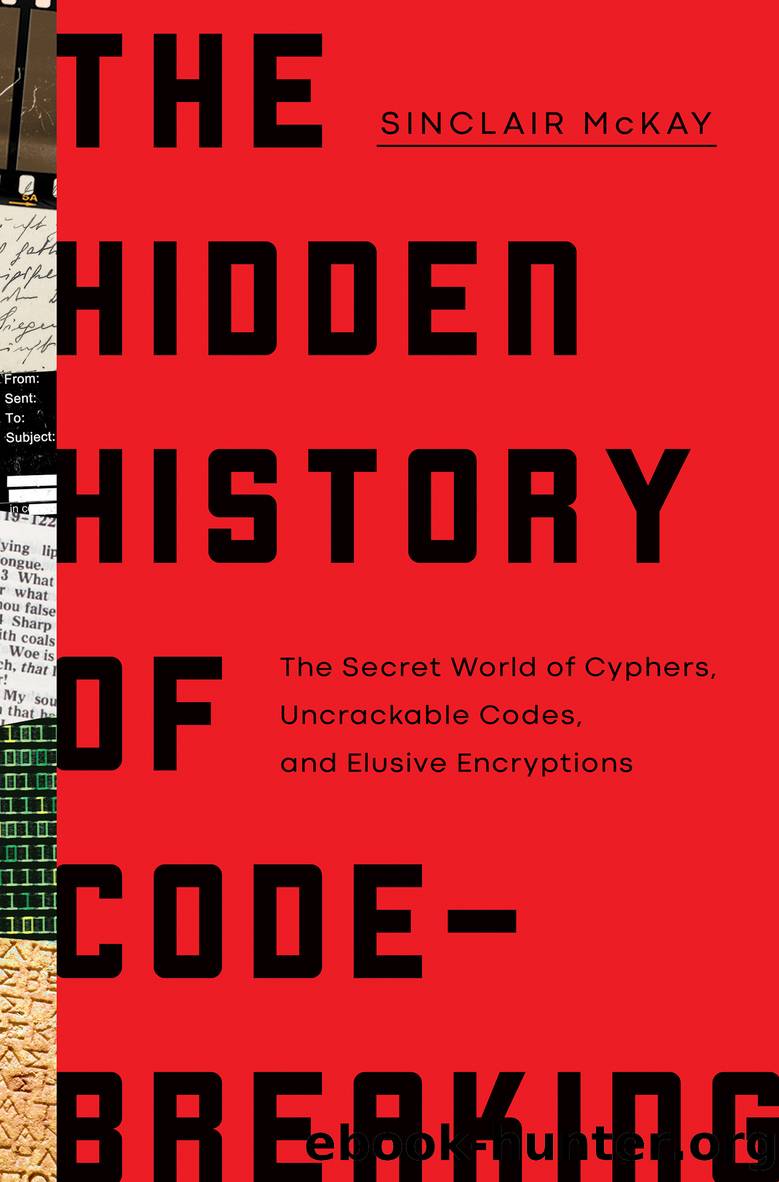The Hidden History of Code Breaking by Sinclair McKay

Author:Sinclair McKay
Language: eng
Format: epub
Publisher: Pegasus Books
Published: 2023-08-02T00:00:00+00:00
30. THE TSARâS VISIONARY
Through the crunching snow that lay uniformly across beautiful cities from Warsaw to Riga, St Petersburg to Moscow, there moved a figure who attained near-legendary status within the feared secret police of the Russian tsar. He travelled widely across steppes, his expertise sought after in many corners of what was then the Russian Empire. His capacity to descend into mystical trances of thought, unable to be reached by anyone, gave him a slightly supernatural aura (some years before the advent of the monk Rasputin into the tsarâs court). His skill was that of codebreaking. Ivan Zybin had an uncanny ability to see deep into the heart of any cipher and wrest the truth from its deceitful coils. At a time of constant threatened revolution, terrorism and severe oppression, the secrets that men encrypted posed direct and regular threats to the powers that held Russia in such a tight grip. Zybin could not stem the tides of history, but he was destined to become part of the countryâs secret past.
Like their counterparts in western Europe, the Russians in the nineteenth century had been adept at establishing âblack chambersâ. Secret departments were set up where diplomatic letters and other protected correspondence could be sent, opened, copied, resealed and resent, while cryptographers worked on the ciphers they had harvested. By the time of the reign of Tsar Alexander II, such codebreaking efforts were taking on swarms of underground revolutionary movements. Having acceded to the Russian throne in 1855, Alexander had at last bowed to the modern world with the emancipation of the serfs in 1861, and the effect upon Russiaâs rural society was significant. At last, peasants were free to own their own property and to marry whom they wished without seeking the permission of patriarchal and oppressive landowners. But for huge numbers of younger radicals, this and other reforms could only be viewed as the first steps towards freedom from all aristocratic oppression.
The tsar became the focus of a range of assassination attempts, some where the putative killers confronted him with a pistol in public spaces â such as the busy 1867 World Fair â and others where they attempted to blow up buildings that he was in (such as the ballroom of the Winter Palace). In the end, death came in St Petersburg. The tsar was in his coach, accompanied by several Cossacks, when a young man stepped forward from the crowd with a package tied up in white cloth. He threw it under the horsesâ hooves â and it exploded.
But the carriage had been specially modified to make it, to an extent, bulletproof, and though one of the Cossacks inside had been killed, the tsar was able to emerge from the wreckage. At this point, though, a second young assassin from the same revolutionary group, The Peoplesâ Will, materialised. And with the uncanny cry, âIt is too early to thank God!â he threw another bomb. This time the tsar was caught fully in the blast and those racing to his aid were horrified to see the blood pouring from the stumps of his shattered legs.
Download
This site does not store any files on its server. We only index and link to content provided by other sites. Please contact the content providers to delete copyright contents if any and email us, we'll remove relevant links or contents immediately.
Learning SQL by Alan Beaulieu(6239)
Weapons of Math Destruction by Cathy O'Neil(6220)
Digital Minimalism by Cal Newport;(5707)
iGen by Jean M. Twenge(5387)
Sapiens by Yuval Noah Harari(5325)
The Age of Surveillance Capitalism by Shoshana Zuboff(4252)
Elon Musk by Ashlee Vance(4089)
Thing Explainer by Randall Munroe(3911)
Apollo 8 by Jeffrey Kluger(3672)
Future Crimes by Marc Goodman(3566)
The Science Book (Big Ideas Simply Explained) by DK(3256)
Who Can You Trust? by Rachel Botsman(3112)
The Innovators: How a Group of Hackers, Geniuses, and Geeks Created the Digital Revolution by Walter Isaacson(3008)
I Live in the Future & Here's How It Works by Nick Bilton(2963)
Infinite Energy Technologies by Finley Eversole(2954)
Steve Jobs by Walter Isaacson(2863)
Dawn of the New Everything by Jaron Lanier(2751)
Chernobyl by Serhii Plokhy(2516)
Ben Franklin's Almanac by Candace Fleming(2497)
